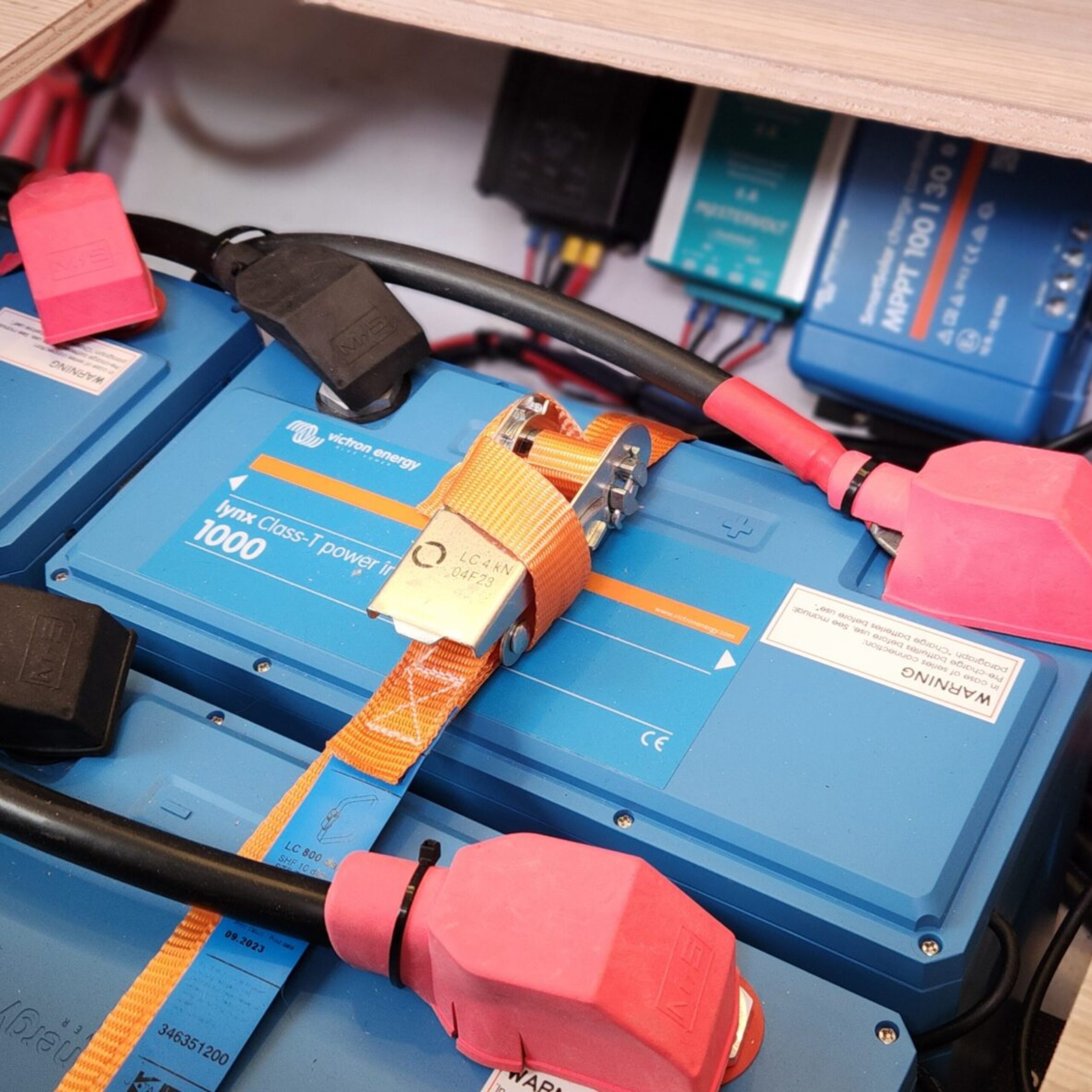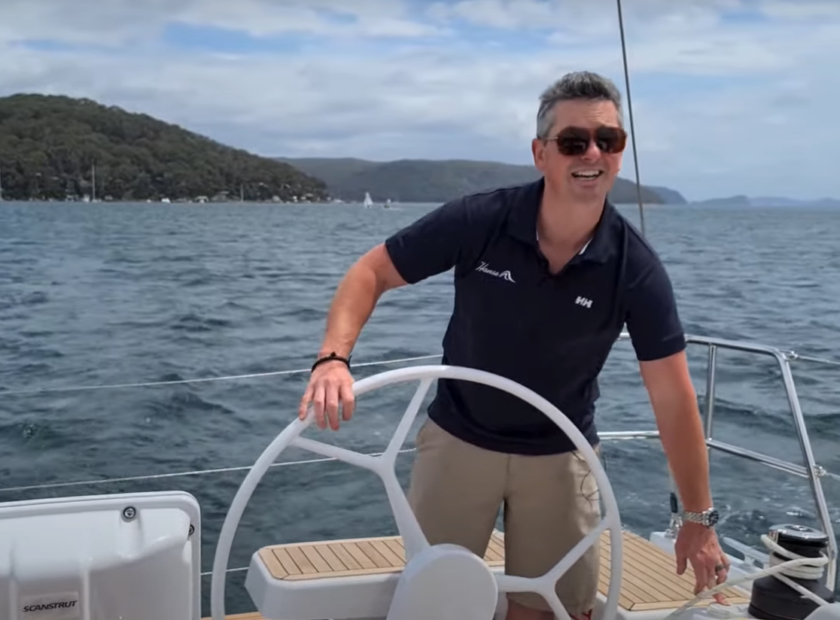An upgraded lithium battery system on this new Hanse 458 will enhance and extend the options for cruising New Zealand and beyond.
The last examples of the extremely popular Hanse 458 model are currently being delivered to customers and hull #271 is being handed over to an Auckland Owner and his family over the next few weeks.
Combining good performance, easy handling and comfortable accommodations with luxury accents, the 458 has been a benchmark in the mid 40-foot family cruiser category.
The latest addition to the 458 fleet in NZ is a standard layout with the Owner’s cabin in the bow, two large double cabins aft and a bathroom to port in the saloon. The stylish interior with various upgraded joinery and finishes create an inviting space that includes a well-stocked galley and a spacious dining area in the saloon.
Add synthetic teak decks, a bow thruster, a dodger/bimini/in-fill and side clears around the cockpit and you have a yacht eminently capable of slipping out to the many anchorages and islands in the nearby Haruaki Gulf for a weekend or a few weeks.
However, a conversion from the factory supplied AGM batteries (Absorbed Glass Mat), to a lithium battery system will result in a big boost in the Hanse 458’s battery capacity and efficiency, resulting in the ability to go further and stay away for longer.
“Many customers who have aspirations to cruise to any of our beautiful but quite remote cruising grounds here, or through the South Pacific, have elected to go with lithium with solar,” reveals Cameron Burch, Windcraft’s NZ Sales Manager.
Cam says Windcraft’s dedicated Service Team located at Auckland’s Half Moon Marina have carried-out more than a dozen AGM to lithium conversions with customers very satisfied with their upgraded battery systems.
“Apart from giving much greater battery capacity in terms of usable power, you can also charge a lithium system so much faster,” Cam explains. “A reasonable sized solar package plus an alternator upgrade means you might only have to run the engine for 30 to 60 minutes a day, or not at all relative to the battery bank’s capacity and level of solar charging when you’re away for long periods of extended cruising,” he continues.
Cam estimates the change-over to lithium increases the boat’s battery capacity by 60 per cent on average. Add to that, “the fact that lithium battery can be recharged much more quickly off the engine, genset or solar makes the tech a winner on all levels,” he says.
The package for the new Hanse 458 undergoing the latest conversion includes Victron Lithium Batteries (2x 330AH for total 660AH), a Balmar XT170 alternator and voltage regulator, plus 300 watts of solar with MPPT regulation.
Cam praises the Victron battery management system for its ease of operation: “simple displays, whether it’s at the nav station or a separate touch screen panel, as well as integration with your smart phone enabling remote monitoring,” he details.
See photos of a recent lithium battery system install by Windcraft in Auckland here:
With ever increasing power demands on today’s cruising yachts lithium battery systems represent a step change in battery technology the many sailors are taking advantage of. There are ongoing concerns around fires on yachts (particularly superyachts), and on land related to lithium batteries.
But not all lithium batteries are the same. The difference is in the electrolyte. Lithium-ion batteries, which are used to power phones, tablets and other portable electronics, use lithium-cobalt-oxide (LiCoO), which provides lots of energy versus size and weight.
However, cobalt is unstable, so if charged improperly, this type of lithium-ion battery can get hot and catch fire. On the other hand, Lithium-iron batteries, recommended for marine applications use a lithium-iron-phosphate (LiFePO) electrolyte that’s more stable, not combustible and can better resist mishandling during charging and discharging.
We’ve distilled a backgrounder/explainer on lithium to help getting your head around it.
The short argument for lithium batteries is they perform better and last longer than many lead-acid batteries. They also weigh less and take up less room, important considerations on any cruising yacht. A lithium battery can pump-out twice the usable power as its same size lead counterpart and maintain voltage through almost all the discharge cycle. They can be recharged much faster. Add to that the extra serenity gained at anchor minus the genset hum.
As mentioned it’s important to note that not all lithium-ion batteries are the same. Included under the lithium umbrella are lithium cobalt, lithium manganese, lithium nickel manganese, lithium nickel cobalt aluminium, lithium titanate and lithium iron phosphate.
Also known as LiFePO4 or LFP, lithium iron phosphate batteries are now accepted as the best and safest option for marine house battery installations. They suit deep-cycle usage but, more importantly, studies have shown that the chemical composition is less prone to overheating and won’t self-ignite or self-combust if there’s a failure.
The other main benefits of LiFePO4 batteries are that they will accept a very rapid, high-current recharge, and they can be discharged to almost empty without the need to be regularly recharged to 100% State of Charge (SoC) as you have to with Lead-Acid (LA) batteries. In fact, they are happier to sit between 20%-80% SoC most of the time. You can even discharge LiFePO4 batteries completely without doing them any harm, although most built-in Battery Management System (BMS) will shut them down at around 12V, which is equivalent to around 10% SoC.
Windcraft’s Cam Burch agrees the stats for lithium are compelling. “Victron have a 220AH lithium battery option,” he says. “With 75% of that 220AH capacity able to be used, this single battery provides up to 165AH of useable charge. That’s 22% more useable capacity than the 2x AGM batteries provide in one smaller, lighter battery,” he adds.
The exact configuration of your new system will depend on your current draw which will affect the size of your replacement battery bank. 12V batteries don’t have to wired in series because lithium-ion batteries come in dedicated 12, 24, 36 and 48 volt capacity that can be hooked-up in parallel.
On of the main caveats to all this is obviously installation. Experts recommend choosing a recognised battery band that’s fit for purpose (not for EV’s or other uses) and use an accredited marine electrician. Both of Windcraft’s highly professional Service Centres in Auckland and Sydney have developed close working relationships with top marine electricians and our experienced staff are fully capable of handling your conversion project.
Cam makes the point the cost of the change-over including alternator upgrades has come down significantly over the past 12 months to around $12k NZD for a base package. “it’s really a no-brainer if significant cruising is in your plans,” he emphasises.
Described by reviewers as a “seriously voluminous yacht”, a Hanse 458 with its enviable sailing qualities and ability to handled short-handed is a very attractive cruising platform. A lithium battery upgrade only extends the scope and duration of an Owner’s cruising ambitions.
For more information and to contact our Service teams:
Auckland – tim@windcraftservice.com
Sydney – cameron.miles@windcraftservice.com












